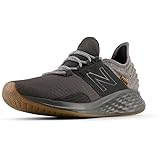The challenge of consistently creating delicious, healthful, and truly gluten-free bread is a common concern for individuals with specific dietary restrictions or wellness objectives. Traditional wheat-based loaves, while familiar, often do not align with the nutritional profiles or allergen-free requirements sought by many. However, as adeptly demonstrated in the accompanying video, a pioneering solution is presented through freshly baked Ragi Bread. This innovative recipe meticulously harnesses the potent benefits of ragi flour, resulting in a gluten-free, nutrient-dense, and remarkably soft bread that addresses these very needs.
Understanding Ragi: The Power of Finger Millet
Ragi, scientifically known as Eleusine coracana and commonly referred to as finger millet, is an ancient grain celebrated for its exceptional nutritional profile. It is widely cultivated in arid and semi-arid regions, providing a resilient food source with significant health advantages. Unlike common cereal grains, ragi is naturally gluten-free, making it an ideal staple for those managing celiac disease or gluten sensitivities.
The robust nutritional superiority of ragi is widely recognized within the food science community. It is particularly rich in calcium, with studies indicating that finger millet can contain 5 to 10 times more calcium than other cereals like rice or wheat. This characteristic makes ragi an invaluable dietary component for bone health, particularly in populations where dairy intake might be limited.
Furthermore, ragi is an excellent source of dietary fiber, which is crucial for digestive health and plays a role in managing blood sugar levels. Its high fiber content contributes to satiety, potentially assisting in weight management and reducing the risk of type 2 diabetes. Essential amino acids, notably methionine, are also present in ragi, offering a more complete protein profile than many other plant-based sources.
The Science Behind Gluten-Free Ragi Bread
Baking with gluten-free flours, such as ragi flour, often presents unique structural challenges due to the absence of gluten, the protein network responsible for the elasticity and rise in traditional bread. Without this framework, gluten-free doughs typically lack the necessary cohesion and extensibility, resulting in crumbly or dense textures. However, these challenges are ingeniously overcome through the strategic incorporation of hydrocolloids and specific preparation techniques.
Psyllium Husk: The Indispensable Gluten Replacer
In the making of gluten-free Ragi Bread, psyllium husk emerges as a critical ingredient, effectively acting as a gluten substitute. This soluble dietary fiber, derived from the seeds of Plantago ovata, possesses a remarkable capacity to absorb water and form a gel-like substance. When integrated into gluten-free dough, psyllium husk replicates some of the viscoelastic properties of gluten, providing essential binding and structural integrity.
The mucilage formed by psyllium husk significantly improves the texture and crumb of gluten-free breads, preventing them from becoming too dry or brittle. It imparts a crucial elasticity to the dough, allowing for gas retention during fermentation and subsequently yielding a lighter, more airy bread with a desirable “jaalidaar” or spongy texture, as observed in the video. Moreover, psyllium husk contributes additional dietary fiber, further enhancing the bread’s health benefits, including improved digestive function and gut motility.
Mastering the Ragi Bread Fermentation Process
The transformation of simple ingredients into a risen, flavorful loaf relies heavily on the meticulous process of yeast fermentation. As demonstrated in the video, yeast is introduced to a blend of ragi flour, psyllium husk, oil, sugar, and salt, initiating the leavening action. The sugar serves as the primary food source for the yeast, allowing it to metabolize and produce carbon dioxide gas.
Initially, the batter may appear quite runny, a common characteristic of high-hydration, gluten-free doughs. However, as the mixing progresses, the psyllium husk begins to hydrate and bind the liquid, gradually transforming the mixture into a more cohesive, albeit “latpat” or sticky, dough consistency. This particular texture is indicative of sufficient hydration and proper psyllium husk activation, which is vital for the final crumb structure.
Subsequent to mixing, the dough is covered and placed in a warm environment for approximately two hours, allowing the yeast’s magic to unfold. During this primary proofing stage, the yeast actively ferments, generating carbon dioxide that becomes entrapped within the psyllium husk-reinforced dough matrix. This gas production is responsible for the dough’s significant expansion and the development of its signature “jaalidaar” (web-like or porous) structure. A final proofing period of 30 to 40 minutes, post-shaping and placement in a greased bread tin, ensures optimal aeration and rise before baking.
Baking for Optimal Texture and Flavor
The baking phase is instrumental in setting the bread’s structure and developing its full flavor profile. After adequate proofing, the ragi bread dough is typically baked at a temperature of 200°C (392°F). This initial high heat plays a critical role in promoting rapid oven spring, where the yeast experiences a final burst of activity, causing the bread to expand further before the yeast is deactivated by the rising temperature.
During baking, a series of complex chemical reactions occurs. The starch in the ragi flour gelatinizes, and the proteins set, contributing to the bread’s firm structure. Crucially, the Maillard reaction, a non-enzymatic browning process, takes place on the crust, imparting a rich, appealing color and complex flavors. Proper heat distribution within the oven ensures even baking, preventing a dense, undercooked interior or an excessively browned exterior.
Nutritional Superiority and Health Benefits of Millet-Based Breads
The conscious choice of ragi as the base for this bread significantly elevates its health credentials beyond standard gluten-free offerings. Ragi Bread stands out not merely as a gluten-free alternative but as a truly “super healthy” food, packed with an impressive array of micronutrients and beneficial compounds. Its low glycemic index is particularly advantageous, aiding in stable blood sugar management, which is vital for individuals with diabetes or those seeking to avoid energy crashes.
The inclusion of millet in the diet is associated with numerous positive health outcomes, including improved cardiovascular health due to its antioxidant content and beneficial fatty acid profile. For individuals seeking to enhance their intake of plant-based calcium, phosphorus, and iron, ragi bread serves as an excellent dietary adjunct. Its inherent properties support overall wellness, from digestive regularity to robust bone density, underscoring its role in a balanced, health-focused lifestyle.
A Vegan-Friendly and Sustainable Choice
Beyond its gluten-free attributes, this Ragi Bread recipe is inherently vegan-friendly, often requiring only plant-based ingredients like oil, water, and yeast, alongside the ragi flour and psyllium husk. This makes it an ideal option for individuals adhering to a vegan diet, providing a nutrient-dense bread without any animal products. The use of ragi also aligns with sustainable food practices, as millets are known for their resilience and ability to grow in challenging agricultural conditions with minimal water and inputs, contributing to a more environmentally conscious food system.
The creation of a delicious and healthful Ragi Bread, as highlighted in the video, represents a significant advancement for those navigating gluten sensitivities or simply seeking superior nutritional choices. The thoughtful inclusion of ingredients such as ragi flour and psyllium husk allows for a structurally sound and incredibly soft loaf, providing a substantial alternative to traditional wheat-based options. Such millet-based breads are proving to be invaluable in the contemporary diet, offering both culinary satisfaction and profound health benefits.











